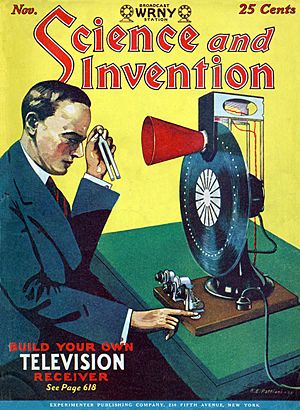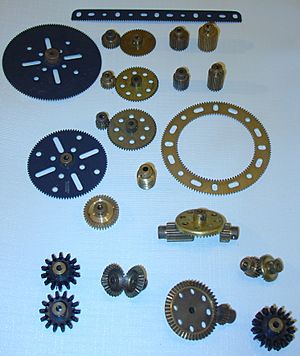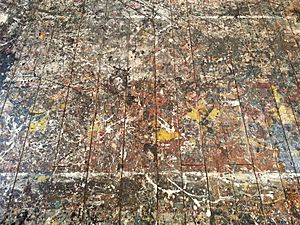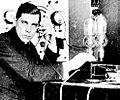Invention facts for kids
An invention is a new thing that someone has made. The computer was an invention when it was first made. We say when it was "invented". New things that are made or created are called inventions. Cars and plastics are inventions that everyone knows. Inventions are made by inventors.
Some inventions can be patented. A patent legally protects the intellectual property rights of the inventor and legally recognizes that a claimed invention is actually an invention. Invention is also an important component of artistic and design creativity. Inventions often extend the boundaries of human knowledge, experience or capability.
Ideas are also called inventions. Writers can invent characters, and then invent a story about them. Over time, humans have invented objects which make life easier for themselves. Because of this, a quote "necessity is the mother of invention", was written.
Process of invention

The idea for an invention may be developed on paper or on a computer, by writing or drawing, by trial and error, by making models, by experimenting, by testing and/or by making the invention in its whole form. Brainstorming also can spark new ideas for an invention. Collaborative creative processes are frequently used by engineers, designers, architects and scientists.
In the process of developing an invention, the initial idea may change. The invention may become simpler, more practical, it may expand, or it may even morph into something totally different. Working on one invention can lead to others too.
History shows that turning the concept of an invention into a working device is not always swift or direct. Inventions may also become more useful after time passes and other changes occur. For example, the parachute became more useful once powered flight was a reality.
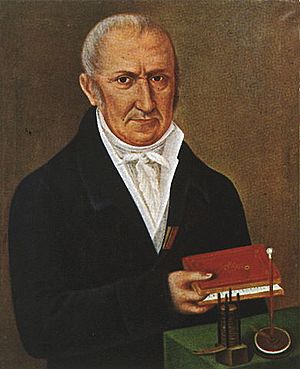
Invention is often a creative process. An open and curious mind allows an inventor to see beyond what is known. Seeing a new possibility, connection or relationship can spark an invention. Inventive thinking frequently involves combining concepts or elements from different realms that would not normally be put together. Sometimes inventors disregard the boundaries between distinctly separate territories or fields. Several concepts may be considered when thinking about invention.
Play may lead to invention. Childhood curiosity, experimentation, and imagination can develop one's play instinct. Inventors feel the need to play with things that interest them, and to explore, and this internal drive brings about novel creations.
Sometimes inventions and ideas may seem to arise spontaneously while daydreaming, especially when the mind is free from its usual concerns. For example, both J. K. Rowling (the creator of Harry Potter) and Frank Hornby (the inventor of Meccano) first had their ideas while on train journeys.
To invent is to see anew. Inventors often envision a new idea, seeing it in their mind's eye. New ideas can arise when the conscious mind turns away from the subject or problem when the inventor's focus is on something else, or while relaxing or sleeping. A novel idea may come in a flash—a Eureka! moment. For example, after years of working to figure out the general theory of relativity, the solution came to Einstein suddenly in a dream. Inventions can also be accidental, such as in the case of polytetrafluoroethylene (Teflon).
Invention is often an exploratory process with an uncertain or unknown outcome. There are failures as well as successes. Inspiration can start the process, but no matter how complete the initial idea, inventions typically must be developed. Inventors may, for example, try to improve something by making it more effective, healthier, faster, more efficient, easier to use, serve more purposes, longer lasting, cheaper, more ecologically friendly, or aesthetically different, lighter weight, more ergonomic, structurally different, with new light or color properties, etc.
Invention in the arts
Invention has a long and important history in the arts. Inventive thinking has always played a vital role in the creative process. Some inventions in art include the:
- Collage and construction invented by Picasso
- Readymade invented by Marcel Duchamp
- Mobile invented by Alexander Calder
- Combine invented by Robert Rauschenberg
- Shaped painting invented by Frank Stella
- Motion picture, the invention of which is attributed to Eadweard Muybridge
Likewise, Jackson Pollock invented an entirely new form of painting and a new kind of abstraction by dripping, pouring, splashing and splattering paint onto un-stretched canvas lying on the floor.
Inventive tools of the artist's trade also produced advances in creativity. Impressionist painting became possible because of newly invented collapsible, resealable metal paint tubes that allowed spontaneous painting outdoors. Inventions originally created in the form of artwork can also develop other uses, i.e., Alexander Calder's mobile, which is now commonly used over babies' cribs.
Funds generated from patents on inventions in art, design and architecture can support the realization of the invention or other creative work. Frédéric Auguste Bartholdi's 1879 design patent on the Statue of Liberty helped fund the famous statue because it covered small replicas, including those sold as souvenirs.
Images for kids
-
A rare 1884 photo showing the experimental recording of voice patterns by a photographic process at the Alexander Graham Bell Laboratory in Washington, D.C. Many of their experimental designs panned out in failure.
-
Eric M. C. Tigerstedt (1887–1925) was known as a pioneer of sound-on-film technology. Tigerstedt in 1915.
-
Railways — probably the most important invention in land transport. (Railway station in Bratislava, Slovakia)
See also
 In Spanish: Invento para niños
In Spanish: Invento para niños


